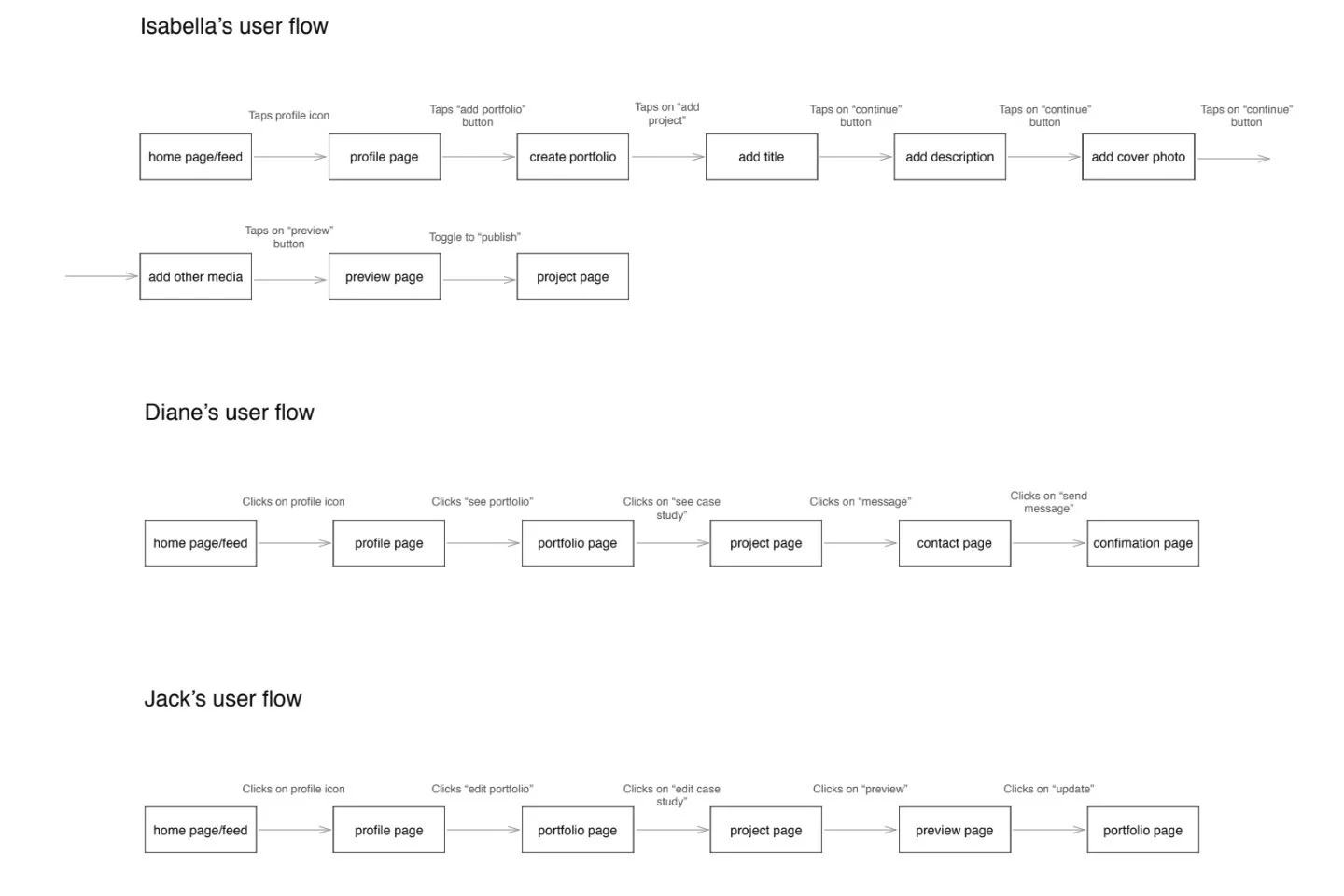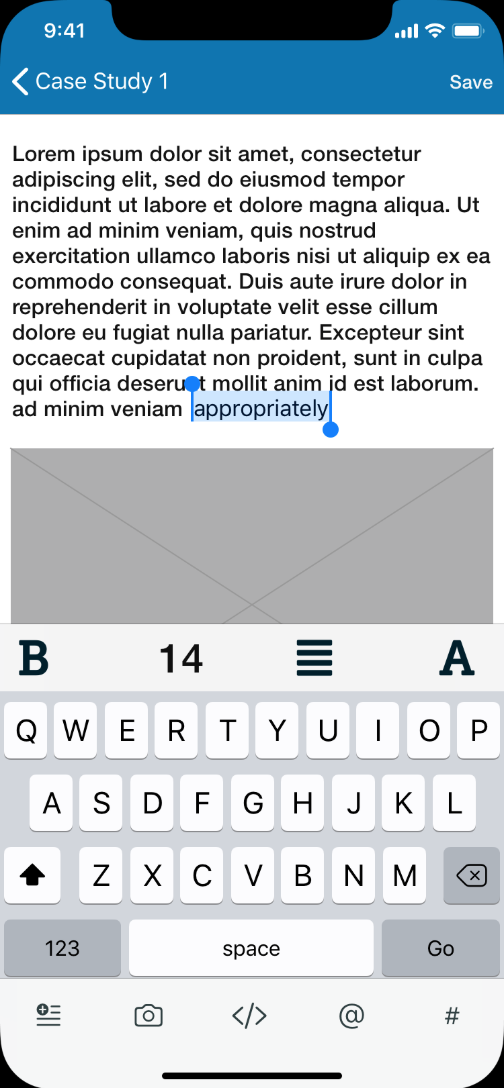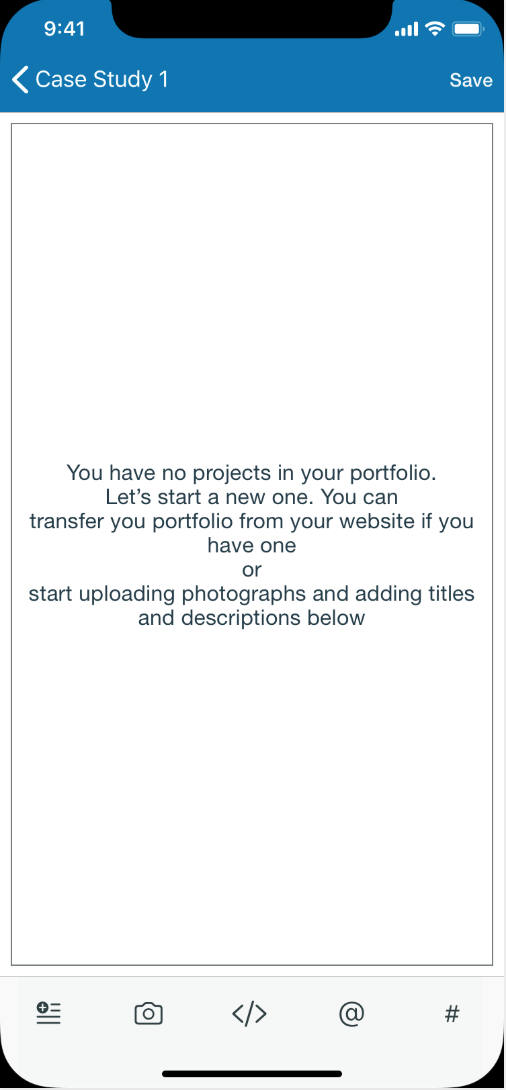



Brief:
Design a way for users to display their creative work through LinkedIn, while still following Linkedin Brand guidelines.
Role:
UX Researcher
Project Manager
Timeline:
2 Weeks
Team:
Liani Ware
Maria Komarova
Trent Segura
David Books
Tools:
Sketch Cloud
Sketch
InVision
Zeplin
LinkedIn is a networking website allowing professionals of any career to connect and showcase their experience.
A portfolio is the fastest way for creative professionals to showcase their best, and recent work. Yet, LinkedIn has yet to accommodate those user’s and allow them to have creative freedom in their profiles.
There is a noticeable gap for creative professionals to present their work on the LinkedIn.
Recruiting and LinkedIn
I previously worked in Technical Recruiting and I had used LinkedIn daily to source, communicate and hire candidates. Once I started this project, I viewed it from both creative and hiring aspects which gave me additional insights in what users would need.
LinkedIn is ignoring a large part of their users by not allowing a customizable aspect in a profile.
LinkedIn and Creatives
First we researched LinkedIn, we gathered a general idea about the business model and analytics.
We proceeded to look into LinkedIn’s statistics, and conducted a survey of our own amongst our own LinkedIn connections.
Research
There are over 590 million LinkedIn users, and these users are spread over 200 countries, while the US is the biggest market with over 154 million users
LinkedIn profiles with photos get 21x more views and 36x more messages and posts with images get twice as many comments
LinkedIn and Behance partnered together in 2010 to create a version of “LinkedIn Creative” but when we did additional research into it, all the corresponding linked were 404 pages
There is a section where you are able to link a portfolio to your profile, and add in a few “media” links, but other then that there is no other creative functionality
90% of recruiters use LinkedIn daily
Survey Results - 52 participants
50% of users are 25-35 years old
Average of 5-10 years of experience
15% of users are HR professionals
55% of users utilize both desktop and mobile, 12% use the mobile app only, 33% use the desktop version only
50% of users check LinkedIn at least once a week
Common portfolio/personal websites used: Adobe Portfolio, Dribbble, Instagram, Squarespace, Wix, and Houzz
“I find LinkedIn to be annoying and I don’t like having to update a social network resume. But, it’s a necessary evil.”
LinkedIn Main Users
As a group we gathered our research and card sorted into the main types of LinkedIn Users. The main 3 users we focused on were young creative professionals looking to get into the field, experienced users who already have an existing profile and network, as well as a HR professional who making hiring decisions.
There are numerous different types of LinkedIn users with different needs, but we boiled it down to those who would want and benefit from a portfolio option on LinkedIn.
Isabelle the Intern
Recent Graduate in Graphic Design
and Photography
Goals:
Find a job ASAP
Wants to stand out in a crowd
Wants to become a part of the community
Frustrations:
LinkedIn doesn’t feel authentic
I don’t have many job titles, but I am capable. How do I show my work?
I need a better way to show my process
No return on Investments - delusion/student loans
Goals:
Hire someone qualified via LinkedIn
Hire a good culture fit
Frustrations:
Can’t easily find portfolios easy on LinkedIn
Incomplete/outdated profiles
Fluff on resumes, profiles and portfolios
Diane the Dungeon Master
HR Professional
Derek Jackson
Jr. Creative Director
Goals:
I want to be more visible in my field
I want to keep up to date with changes in the community
Keep my options open for job opportunities
Find a job that interest me and sense of fulfillment
Pain Points:
Needs a better way to showcase a specific experience
Has work spread out on different platforms
I want to show everything I can, but focus on on best work and keep it easy to navigate
Ideation
Two options were to create an entire new app that works in conjunction with LinkedIn or integrating a portfolio function to the existing app. Additionally we researched several different current alternatives
We compared hosting sites such as Dribbble, Wix, SquareSpace, Weebly, and Instagram and took design inspiration for uploading and organizing content. We looked into job searching sites, since LinkedIn is a large hub for hiring professionals to ensure we are appealing to “Diane’s” of the world as well.
Having access to job history, education and skills on the profile is important to those hiring. But being able to find a portfolio in the least amount of clicks was important to creative professionals.
User Flows
We wanted to walk through the different flows by showing a user creating a portfolio page and editing one. As well as the perspective from an HR user looking through a portfolio and messaging a candidate through the module.
Design Studios and More Iterations
We went through several design studios as a group and iterated on each others design. I was outspoken during this process in order to create a navigational information architecture and to usure we were meeting our users needs.
We decided that based on the research it would be best to have an integrated portfolio function instead of creating a new application.
Users who are already on LinkedIn are more likely to use an integrated feature, then create a whole new profile on a new platform.
Case Studies
As a group we went through several iterations of the portfolio page and designed what individual case studies would look like.
For these, we took inspiration from sites such as Behance and Dribbble for the layout and the creating a portfolio process.
User Testing and Further Iterations
After creating low to mid fidelity pages we started user testing the flow. What we learned is that the Create a New Portfolio process was a bit confusing with our naming conventions and use of icons.
Final Design
Portfolio Page allows recruiters and hiring managers to see all of the designers work in one place
We wanted to allow a user to display all their work on a LinkedIn portfolio that would be uploaded from a secondary website through an API.
By adding icons for the user to edit an individual portfolio or edit the order of their works we allow the users to have the freedom to personalize the page. However, through our competitive analysis we did not want to give the user too much freedom to edit and customize in order to keep in theme with the LinkedIn brand.
We continuously thought back to our primary users and their needs
Isabella, wanted a way to stand out from the crowd and put her own personality in her portfolio and profile.
Diane, needs a way to easily see a candidates portfolio and their work without wasting time.
Derek, wants a way to organize his work so he can tailor his portfolio to a specific job or opportunity.
Here are two different views of a case study for Isabelle, one is an editing view (left), other would be Diane’s view (right)
My role in this process was creating the lo-fi wireframes and prototypes, whereas my teammate David Books raised the fidelity
Next Steps
Design a desktop version - Our initial brief was to design a mobile application, we were unable to focus on how the desktop version would look like. I would like to go further and implement this design into the existing website.
Create more screens - Since we were limited to a 2 week design sprint, we were only able to create around 22 screens for our main user flows. Ideally I would like to delve more into the entire portfolio process including the settings screens and other
options for customization.Edit naming conventions - I played a large part in the early design process, researching, lo-fi wireframes and early mockups. I would have liked to have more input on design decisions for the final product.
Reflection
During these 2 weeks I mainly acted as the UX Researcher, Project Manager and Lo-fidelity Designer. Working in a group of 4 was difficult especially since we all had different ideas in the beginning of the process. As a group we were able to question each others design decisions and ultimately come up with a design that was unique, yet still solved our users needs.
I leveraged my previous IT Recruiting experience to put myself in the shoes of Diane as well as Isabella. I made many early design decisions based on my previous experiences as well as the research. In my opinion LinkedIn is the best form of social media and I was passionate about this project from the beginning.





















